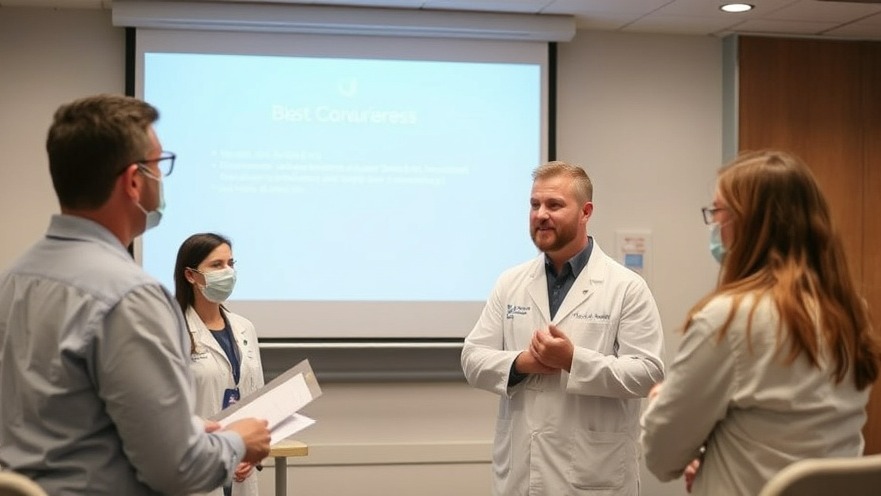
The Hidden Dangers in Risk Assessments for Concierge Medical Practices
In the rapidly changing landscape of healthcare, concierge medical practice owners face unique challenges. As they strive to provide exceptional patient care, understanding and managing risks is crucial not just for compliance, but for the sustainability of their business. Recent insights from Andrea Greco, SVP of healthcare safety at CENTEGIX, highlight significant blind spots often overlooked in risk assessments that can profoundly affect a practice’s profitability and reputation.
Identifying Common Shortcomings
According to Greco, one of the most prevalent oversights in risk assessments is the failure to identify gaps in staff training and understanding. This impacts employee effectiveness and ultimately patient satisfaction. To address this issue, ongoing training initiatives must be implemented to ensure all staff members are educated about current protocols, practices, and policies. Regular employee check-ins and surveys can provide valuable feedback and help gauge staff comprehension, making it possible to tailor training programs accordingly.
The Rising Threat of Workplace Violence
Another critical area needing attention is the heightened awareness of workplace violence in healthcare settings. While healthcare professionals have recognized this issue for years, there is a growing demand for concrete strategies to mitigate these risks. Concierge practices, with their personalized approach to patient interactions, may require specific protocols emphasizing safety without compromising the quality of care. This balancing act is paramount to maintaining both a supportive environment for patients and a secure one for staff.
Accountability and Compliance: A New Era
With increasing accountability from regulatory bodies and the public, concierge practices must remain proactive in refining their risk management strategies. This intensifying pressure necessitates a shift from reactive to preventive measures concerning risk assessments. By focusing on a culture of safety within the practice, owners can foster an environment where staff feel empowered to voice concerns and report potential risks without fear of repercussions.
The Financial Implications of Oversights
In a concierge medicine model, where patient experience directly influences financial success, the implications of these blind spots can be significant. Poor risk assessments leading to incidents of workplace violence or compliance failures can result in costly litigation, decreased patient loyalty, and ultimately, loss of revenue. Enhancing these assessments is not just a regulatory necessity; it's also a business imperative that can safeguard the bottom line.
Strategies for Improvement
To mitigate these risks, concierge practices should implement structured protocols that focus on staff training and hazard identification. This approach involves conducting comprehensive risk assessments that not only comply with legal requirements but are also customized to the specific nuances of concierge medicine. Engaging staff in this process fosters a sense of ownership over safety protocols, ultimately leading to better adherence and proactive risk management.
Concluding Insights
Ultimately, understanding the blind spots in risk assessments and taking timely actions can lead not only to a safer workplace but can also enhance the overall quality of care. By investing in staff education and robust risk management practices, concierge medical practices can secure their standing as leaders in the field, recognized for their commitment to excellence and safety. As you strive to grow your business, remember that a well-informed team is your best defense against unforeseen risks. It’s time to prioritize risk assessments and integrate them fully into your practice's operational strategy.
Staying ahead in concierge medicine requires embracing these insights and actively pursuing improvements. Are you ready to elevate your practice?
 Add Row
Add Row  Add
Add 






Write A Comment